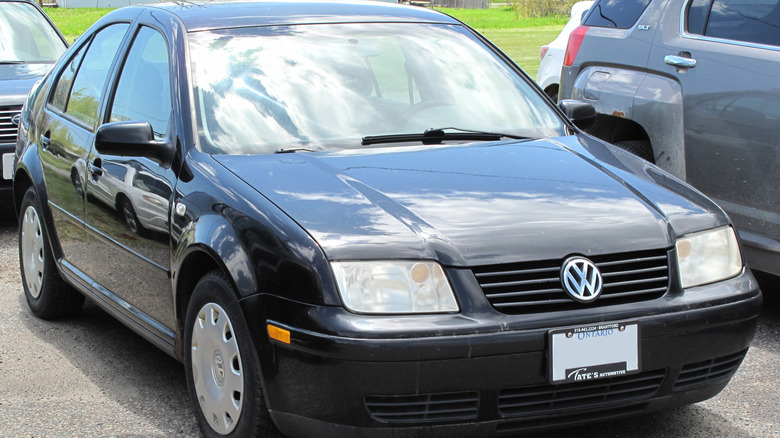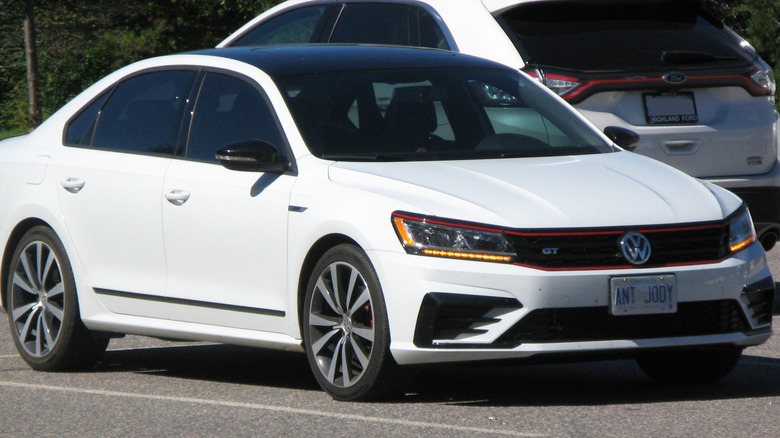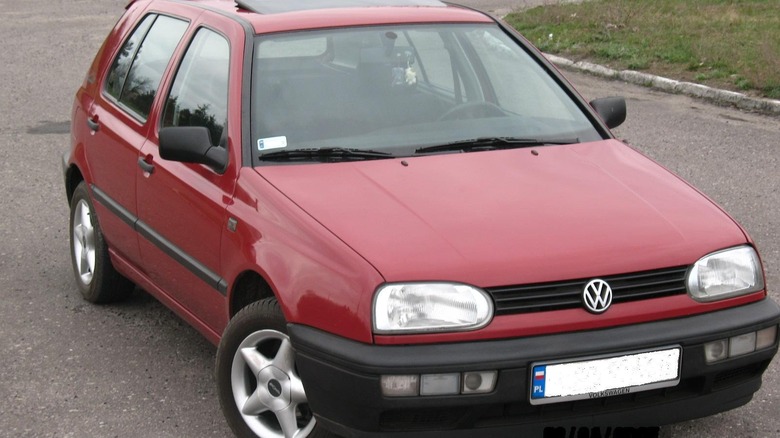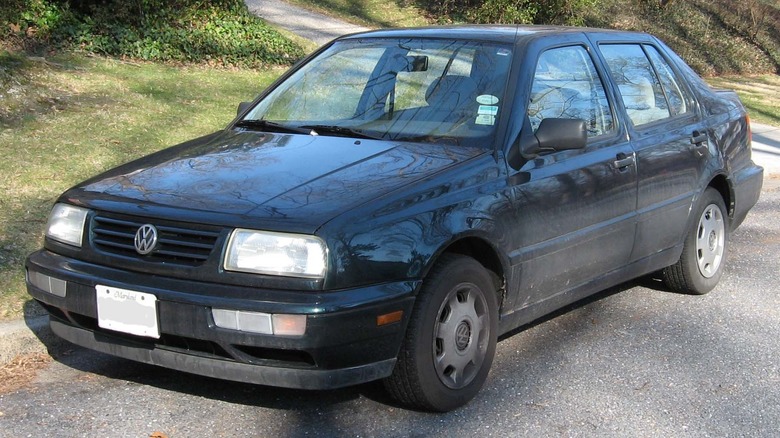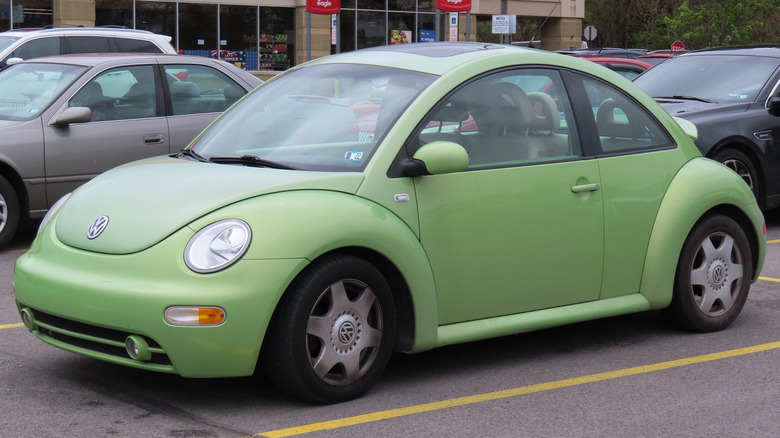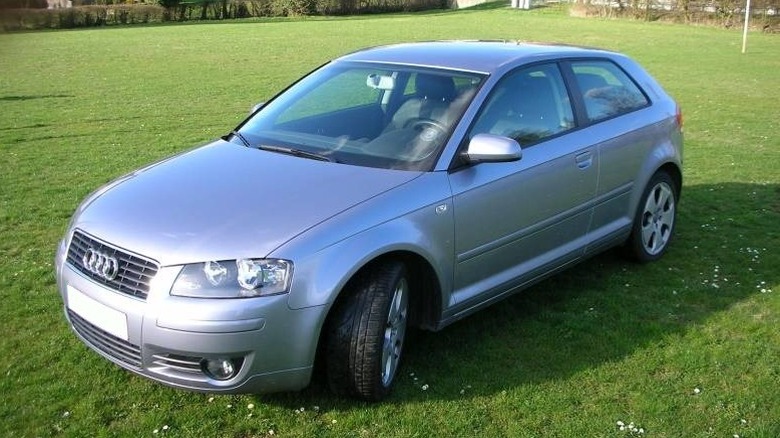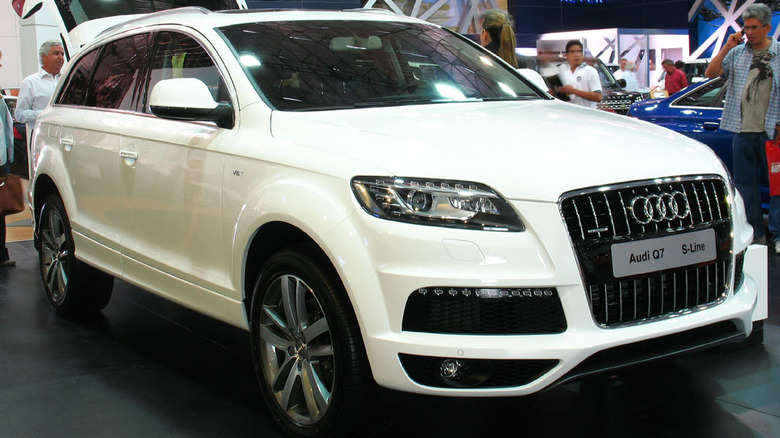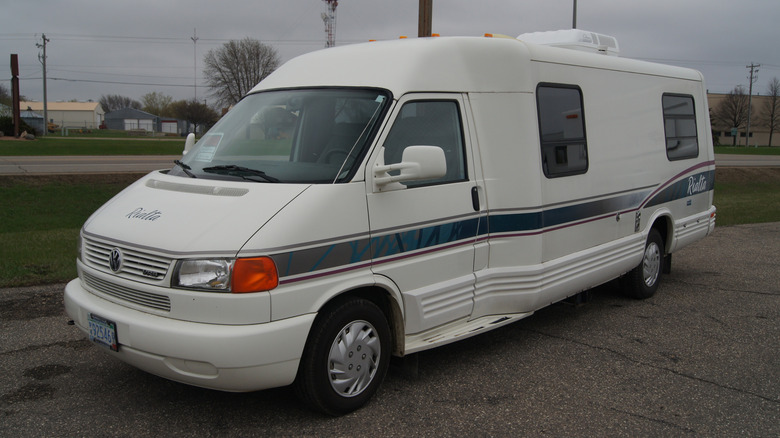Volkswagen's VR6 Engine Is Dead - Here Are 7 Cars It Powered
Anything that lasts several decades in the automotive world is an impressive accomplishment, but not everything can last forever. 2024 saw the true end of production for the Volkswagen VR6 engine that was first introduced in 1991, but having an engine in production for over 30 years is something that the German automaker should be proud of. The company had been slowly phasing out the VR6 over the past decade or so, with it being absent in Europe since the mid-2010s. In the United States, it's not been put into a vehicle since 2023.
The VR6 was a funky engine, combining elements of both V6 and inline-six engines in its design, having just a 15-degree angle between the cylinder banks. They weren't very large engines' the largest iteration had a displacement of 3.6L and only required two camshafts to function. Still, they were excellent choices for a variety of different vehicles, particularly those with front-wheel drive, and they made plenty of appearances inside cars from companies other than Volkswagen as well. As a send-off to this oddity, we are going to look at seven vehicles that the VR6 powered in its 34 years of life.
Volkswagen Passat
It only makes sense to start with the vehicle that utilized the VR6 engine the longest, all the way back to its first year. In 1992, Volkswagen installed the VR6 into two cars: the Corrado and the Passat. While the Corrado came to an end in 1995, the Volkswagen Passat continues to be made today exclusively in Europe and China after being discontinued in North America after the 2022 model year. The Passat ended up using the VR6 engine all the way through 2018. In total, it powered the car's third through seventh generations in that time.
Initially, this new engine was only offered in the GT model of the Passat, and it would take a few years before it became standard. In that first setup, this engine could generate up to 172 hp and 173 lb.-ft. of torque, and Volkswagen would continue to improve the engine as time passed. By the time it was in its final generation in the 2010s, it was now producing upwards of 300 hp and 258 lb.-ft. of torque. For a mid-size family car, these are incredibly respectable output numbers. By the time the Volkswagen Passat came to an end in North America in 2022, it had the sole option of a 2.0L I4 engine, but the VR6 will always be a major part of its history.
Volkswagen Golf
It only took one year before Volkswagen expanded the VR6 engine by adding two more models. One of those was the Volkswagen Golf. The two had a marriage that lasted quite a long time, spanning three generations of the vehicle. It was first implemented for the third generation — or Mk3 — Golf and finally was replaced after the Mk5 fifth generation in 2008.
Like with the Volkswagen Passat, the VR6 did not come standard with the Golf for that initial launch. That was a 2.0L I4 engine that could generate 113 hp and 122 lb.-ft. of torque. The 2.8L VR6 upgrade was a significant power upgrade, increasing the car's maximum output to 172 hp and 173 lb.-ft. of torque. In its later years, Volkswagen replaced that 2.8L model with a larger 3.2L VR6, and with that displacement increase came an increase in power, leading to 250 hp and 236 lb.-ft. of torque. You could get these numbers with the 2007 Golf Mk5 R32 model that hit the market in 2007 and had a small production run of 5,000 units. While these numbers aren't quite as impressive compared to the engine's usage in the Passat, these power ratings in a car as small as a Volkswagen Golf are quite significant. The sixth generation Golf dispensed with the VR6, and its largest engine option was a 2.5L I5 engine.
Volkswagen Jetta
The same year the VR6 made its way into the Volkswagen Golf, it also appeared in the Volkswagen Jetta — or, more specifically, the Volkswagen Vento, which is what the Jetta was renamed in Europe. It wouldn't be until 1993 that the Jetta in North America would get the 2.8L VR6 engine, and from that time, it would remain in the Jetta through the end of the 1990s. Despite the fact that the Jetta and the Golf instituted the VR6 in the same year, the Jetta's usage of the VR6 ended a few years prior to the Golf. It was only utilized in the third and fourth generation of the car, meaning it was phased out after 2005.
The specs for the Jetta were identical to that of the Golf, with 172 hp and 173 lb.-ft of torque. In its final model year, those numbers were increased to 200 hp and 195 lb.-ft. of torque. These aren't quite as strong as the Golf numbers, but that car had three more years of improvements on the VR6 from which to benefit. As per usual, the VR6 was not the standard engine on the Volkswagen Jetta, and it was the largest engine option available, which you get on some of the higher-tier trims for the car. The VR6 was also replaced by a 2.5L I5 engine after it was phased out of the Jetta.
Volkswagen New Beetle RSi
The Volkswagen Golf's relationship with the VR6 ended with a 3.2L engine for its R32 model. That was not the first Volkswagen to use that larger variant of the VR6. Instead, that honor goes to one of the most iconic vehicles that the German automaker has ever produced: the New Beetle. This reinvention of the classic punch buggy was something of a sensation when it hit the market in the late 1990s, and for the most part, you were going to have various sizes of an inline-four engine to choose from for it. That changed with the 2001 model year with the introduction of the New Beetle RSi, a truly forgotten car in Volkswagen's history. This was a special model of the car that sold just 250 units total, and it is this rarity where the 3.2L VR6 engine made its debut.
With this engine, the RSi had a maximum output of 221 hp and 236 lb.-ft. of torque, both of which are rather impressive for a car of this size. Some folks still saw that as a bit too limiting, and turbo kits have been made of the Beetle's VR6 that help the engine exceed 400 hp. In 2019, one was even boosted to generate 700 hp and 800 lb.-ft. of torque. While it is fun to think of this tiny car delivering that kind of power, only a select few people have done this. Those initial numbers mentioned were what you were going to get. Being a specialty item, the New Beetle RSi went away after 2003, and no other Beetle used the VR6 engine.
Audi A3
If you did not know, Audi is the luxury arm of Volkswagen. Because of that, the two share many of the same platforms in the construction of their respective vehicles. Despite being called the Audi A3, it was the first vehicle built on the company's A4 platform. This would be the same platform that would go on to be used for the fourth generations of both the Volkswagen Golf and Jetta, as well as the New Beetle. If all of those vehicles went on to utilize the VR6 engine in some capacity, it only makes sense that the Audi A3 would follow in their footsteps.
The VR6 made its debut in the A3 at the beginning of the car's second generation as a specialized sport model in 2003. By this time, Volkswagen had moved over to the 3.2L model, making this the biggest engine option available for the car. Just like with the Golf, it had an output of 250 hp and 236 lb.-ft. of torque. The second generation A3 lasted all the way through 2013, and the VR6 was always an option during that decade-long run, though you didn't really see much improvement in its output in that time. Unfortunately, the ending did not make it to the Audi's third generation, getting replaced once again by the 2.5L I5 model that Volkswagen created. The Audi A3 would be the only Audi hatchback to use the VR6, but it would not be the last Audi to have one under the hood.
Audi Q7
All of the vehicles mentioned thus far have been relatively smaller vehicles like coupés and sedans. This is something you would expect with an engine ranging from 2.8L to 3.2L of displacement volume, which is not all that large. However, the Volkswagen VR6 engine was not exclusively in these smaller sized cars and appeared under the hood in some SUVs as well. One of those is the Audi Q7, which is the luxury sister of the Volkswagen Touareg.
The Q7 installed the VR6 much later than the rest of the vehicles on this list, starting with the 2010 model year in the United States. Because this is a larger vehicle, it also required a larger displacement for the engine. Therefore, we get the first instance of a 3.6L VR6 model appearing here. With this added size also came added power, as it had a maximum output of 276 hp and 266 lb.-ft. of torque. These are not significantly more than the 3.2L model, but when you account that the Q7 is a crossover SUV, that little extra power makes a big difference.
Unlike the other models on this list, the VR6 was actually not the largest engine you could get for the Audi, as a 4.2L V8 option was also available. That upped your output to 322 hp and 560 lb.-ft. of torque. The Audi Q7 entered its second generation for the 2016 model year, and for this, the VR6 was dropped from the engine options, leaving a 3.0L V6 and 4.0L V8 as the higher tier selections.
Winnebago Rialta
Audi and Volkswagen are under the same umbrella, using the same parts and designs as each other, so it makes sense that Audi vehicles would utilize the VR6 engine. However, it is more unusual for this specific engine to be shipped out to other companies for use, but it did happen. Companies like Ford and Mercedes-Benz both implemented the VR6 sparingly. One of the most surprising uses of the engine is with vehicles made by the Winnebago company, specifically the Winnebago Rialta.
The recreational vehicle first put the VR6 under the hood for its 1998 model year. Unlike all of the other vehicles on this list, it was the one and only engine option for the Rialta. This was also when it still had 2.8L of displacement, which may surprise you because the RV measured nearly 22 feet in length. That sized engine would remain there through the 2005 model year. It should be noted that the VR6 was updated from a 12-valve engine to a 24-valve one in 2002, which increased the output to 201 hp. After 2005, Winnebago discontinued the Rialta. It was effectively replaced by the Winnebago Outlook, which dropped the VR6 entirely. This model came in a variety of different sizes, and the one closest to the Rialta was now equipped with a Ford 6.8L Super Duty V10 engine, which could not be a bigger swerve away from the Volkswagen VR6.
